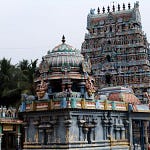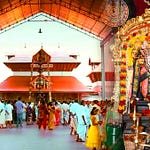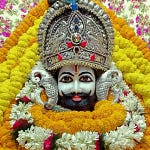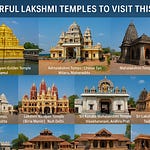Located on the shimmering coastline of Odisha, near the sacred city of Puri, the Konark Sun Temple stands as a magnificent symbol of India’s ancient wisdom, architectural brilliance, and deep-rooted spirituality. Known as the "Black Pagoda" by European sailors due to its dark color and prominent tower that served as a navigational landmark, the temple is not just a place of worship but a spiritual monument radiating timeless glory.
This temple isn’t merely stone carved into grandeur—it is time frozen into art, devotion sculpted into stone, and the essence of divinity manifested into physical form. Here's a complete exploration of this incredible wonder.
Origin and Foundation
The Konark Sun Temple was built in the 13th century CE, during the reign of King Narasimhadeva I (1238–1264 CE) of the Eastern Ganga Dynasty. According to historical records and temple inscriptions, the temple was constructed to honor Surya, the Hindu Sun God, symbolizing light, energy, time, and life itself.
The king, a great patron of art and religion, commissioned this grand architectural feat to celebrate a victorious military campaign over the Muslim rulers of Bengal. He envisioned a temple that would reflect Surya's celestial chariot, representing motion, precision, and cosmic rhythm.
The name Konark is derived from two Sanskrit words—"Kona" (corner) and "Arka" (Sun)—meaning the corner where the Sun is worshipped.
Architectural Glory and Timeline
Constructed in 1250 CE, the temple is an epitome of Kalinga architecture. Designed as a gigantic chariot of Surya, it features:
24 intricately carved wheels, symbolizing the hours of a day
Seven horses, representing the days of the week and the Sun's progression across the sky
A massive shikhara (tower), which unfortunately collapsed centuries ago
Exquisite sculptures of gods, celestial beings, dancers, animals, and mythical scenes
The temple was once part of a larger complex, including a main sanctum (Vimana), Jagamohana (audience hall), Nata Mandir (dancing hall), and Bhoga Mandapa (offering hall). Today, only the Jagamohana and parts of the ruins survive.
Timeline Snapshot:
1238–1250 CE: Construction under Narasimhadeva I
15th–16th century: Decline begins, likely due to invasions or natural damage
Early 17th century: The main tower collapses
British Period: Rediscovery and documentation; declared a protected site
1984: Recognized as a UNESCO World Heritage Site
Rituals, Puja, and Worship
Though the main sanctum of the temple is no longer active due to its collapse, Surya worship continues symbolically. Devotees still perform rituals around the temple premises and particularly at the nearby Mayadevi Temple, which is believed to be dedicated to Surya’s wife.
Key rituals include:
Sunrise and Sunset Arghya: Devotees offer water and chant mantras facing the rising and setting Sun.
Ratha Saptami Festival: Celebrated during January-February, symbolizing Surya’s chariot turning northward (Uttarayana). It draws thousands of devotees.
Magha Saptami: A huge festival at nearby Chandrabhaga beach, where devotees take a holy dip and offer prayers to the Sun God.
Although no daily pujas occur inside the Konark sanctum today, the site remains spiritually potent and revered.
Religious and Spiritual Significance
The Sun God, Surya, is the dispeller of darkness, both literally and metaphorically. In the Rigveda and various Hindu scriptures, Surya is the witness to all deeds (Karma Sakshi) and the sustainer of life. He embodies:
Health
Vitality
Knowledge
Time (Kala)
For devotees, visiting Konark is believed to:
Cleanse sins and past karmas
Bring mental clarity and physical strength
Strengthen planetary influence (especially for those with malefic Sun in astrology)
Remove diseases and increase vitality
The temple is also part of the triad of sacred sites in Odisha—along with Puri’s Jagannath Temple and Lingaraja Temple in Bhubaneswar, completing the Golden Triangle of Odisha Pilgrimage.
What to Do During Your Visit
Explore the Temple Art: Marvel at the intricate carvings—erotic sculptures, war scenes, celestial dancers, musicians, and floral designs.
Visit Chandrabhaga Beach: Located nearby, it’s a holy site where people perform Surya Namaskar during sunrise.
See the Konark Museum: Maintained by the ASI, it houses many original sculptures and architectural pieces from the temple.
Attend Konark Dance Festival: Held every December, it showcases India’s classical dance forms against the backdrop of the temple.
Photography: Capture the timeless aura of the temple, especially during golden hour when the stone glows.
Perform Arghya at Sunrise: A spiritual act of offering water to Surya with mantras chanted in reverence.
What Not to Do
Do not climb on sculptures or temple structures – these are sacred and protected.
Avoid loud behavior, playing music, or creating disturbance – the site is spiritually and historically important.
Do not litter – maintain the purity and serenity of the surroundings.
Do not remove or touch artifacts – these are part of a fragile ecosystem.
No drone photography without proper permission.
Mysteries and Legends
The Konark Temple is wrapped in several myths and mysteries:
Magnetic Dome Theory: Legends speak of a massive iron magnet atop the temple that caused compass deviations in passing ships. It's believed to have been removed by Portuguese sailors or natural disasters.
The Floating Idol: Myths suggest that the Surya idol used to levitate mid-air due to magnetic forces—a tale likely inspired by architectural illusions.
The Last Stone and the Architect’s Son: Legend says the temple couldn’t be completed until a young boy, Dharmapada, sacrificed his life to ensure success—a tale of ultimate devotion and brilliance.
Importance in Devotee’s Life
Konark is not just a monument. For millions of Hindus, it is:
A site of pilgrimage representing cosmic energy
A place to seek health, spiritual strength, and forgiveness
A reminder of the Sun's divine presence in daily life
A testament to devotion, architectural mastery, and the fleeting nature of time
It is common for devotees to visit Konark as part of the Puri Jagannath Yatra, symbolizing the journey from material consciousness to spiritual illumination.
Visiting Time and Travel Guide
Best Time to Visit: October to March (pleasant weather, ideal for exploring and attending festivals)
Timings: 6:00 AM to 8:00 PM
Entry Fee: Applicable for Indian and foreign visitors; free for children under 15
Nearest Railway Station: Puri (35 km)
Nearest Airport: Biju Patnaik International Airport, Bhubaneswar (65 km)
By Road: Well-connected from Bhubaneswar, Puri, and Cuttack
Travelers can hire cabs or take buses from Puri or Bhubaneswar. The roads offer scenic coastal views, especially during sunrise drives.
The Konark Sun Temple isn’t just a structure built of sandstone and laterite—it is a timeless conversation between Earth and Cosmos, a place where science, art, devotion, and mystery converge. From its wheels that can tell time to the mythic stories carved into its walls, every stone sings the praise of the divine Sun and the brilliance of those who built it.
To walk through Konark is to walk through time, energy, culture, and faith. For any devotee, traveler, historian, or seeker, Konark offers not just a destination—but an awakening.










